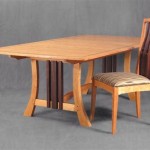Farmhouse Centerpieces for Dining Room Table: A Guide to Rustic Elegance
The dining room table serves as a focal point within a home, functioning not only as a space for meals but also as a gathering place for family and friends. The centerpiece, therefore, plays a crucial role in setting the tone and ambiance of the room. Farmhouse style, with its emphasis on natural materials, simplicity, and a touch of rustic charm, has become increasingly popular. A farmhouse centerpiece can transform a dining room table into a welcoming and visually appealing space.
Selecting the right farmhouse centerpiece involves considering various factors, including the table's size and shape, the overall décor of the dining room, and personal preferences. The goal is to create a cohesive and balanced arrangement that complements the existing aesthetic while adding a touch of warmth and character. Incorporating elements of nature, vintage finds, and handcrafted items are hallmarks of a successful farmhouse centerpiece.
Key Considerations When Choosing a Farmhouse Centerpiece
Several elements influence the effectiveness of a farmhouse centerpiece. Understanding these factors is critical for achieving a harmonious and visually pleasing result.
Table Size and Shape: The dimensions of the dining room table directly impact the size and shape of the centerpiece. A long rectangular table can accommodate a more extended arrangement, while a round table lends itself to a circular or symmetrical design. The centerpiece should be proportionate to the table; an overly large arrangement can overwhelm the space, while a too-small arrangement might appear insignificant.
Existing Décor: The centerpiece should complement the existing décor of the dining room. Take into account the color palette, textures, and overall style. If the dining room features neutral tones and natural materials, a centerpiece that incorporates similar elements will create a cohesive look. Conversely, if the dining room is more modern, a farmhouse centerpiece can add a touch of rustic charm and contrast.
Seasonal Considerations: The seasons provide natural inspiration for farmhouse centerpieces. Springtime arrangements might feature fresh flowers, greenery, and pastel colors. Summer centerpieces could incorporate seashells, nautical elements, or vibrant blooms. Autumn lends itself to pumpkins, gourds, and warm, earthy tones. Winter centerpieces might include pinecones, evergreen branches, and candles.
Functionality: While aesthetics are important, the centerpiece should also be functional. It should not obstruct views across the table or interfere with serving dishes. Consider the height and width of the arrangement to ensure it does not impede conversation or dining activities. Low-profile arrangements or those with open spaces can help maintain functionality.
Essential Elements of a Farmhouse Centerpiece
Several core elements commonly feature in farmhouse centerpieces, contributing to their rustic and charming appeal.
Natural Materials: Incorporating natural elements is crucial for achieving a farmhouse aesthetic. Wood, stone, greenery, and natural fibers are frequently used. Wooden crates, bowls, and trays serve as excellent bases for centerpieces. Greenery, whether fresh or artificial, adds a touch of life and vibrancy. Items such as pinecones, branches, and dried flowers further enhance the natural feel.
Vintage Finds: Vintage items add character and a sense of history to a farmhouse centerpiece. Repurposed containers, such as mason jars, milk jugs, and galvanized buckets, can be used to hold flowers or other decorative elements. Antique books, candlesticks, and clocks contribute to the vintage charm. The key is to select items that have a slightly worn or aged appearance, adding to the rustic feel.
Candles and Lighting: Candles and other forms of lighting create a warm and inviting ambiance. Pillar candles, taper candles, and votive candles are all suitable options. Consider using candle holders made of natural materials, such as wood or metal, to complement the farmhouse aesthetic. String lights or fairy lights woven throughout the centerpiece can add a touch of whimsy.
Textural Variety: Combining different textures adds visual interest and depth to the centerpiece. Smooth glass, rough wood, soft fabrics, and textured metals can create a dynamic and engaging arrangement. Juxtaposing contrasting textures, such as pairing weathered wood with delicate lace, can enhance the overall appeal.
Floral Arrangements: Flowers are a classic element of any centerpiece, and farmhouse arrangements often feature wildflowers, greenery, and simple blooms. Sunflowers, daisies, hydrangeas, and lavender are popular choices. Arrange the flowers in mason jars, vintage vases, or galvanized buckets for a rustic touch. Consider using a variety of textures and colors to create a visually appealing arrangement.
Examples of Farmhouse Centerpiece Ideas
To further illustrate the principles of farmhouse centerpieces, consider the following specific examples:
Mason Jar Arrangement: Fill several mason jars of varying sizes with wildflowers or greenery. Arrange the jars on a wooden tray or crate. Add candles and small decorative items, such as twine or burlap ribbon, to complete the look. This simple yet elegant arrangement is perfect for a casual farmhouse dining room.
Wooden Box Centerpiece: Use a long, rectangular wooden box as the base for the centerpiece. Fill the box with a variety of potted herbs, succulents, or seasonal plants. Add candles, small figurines, and natural elements, such as stones or moss, to create a miniature garden. This arrangement brings a touch of the outdoors inside.
Galvanized Bucket Arrangement: A galvanized bucket filled with sunflowers, hydrangeas, or other large blooms creates a striking centerpiece. Add greenery and other natural elements, such as branches or pinecones, to enhance the rustic appeal. This arrangement is particularly well-suited for a larger dining room table.
Candlestick Cluster: Arrange a collection of candlesticks of varying heights and styles on a wooden platter or tray. Use candles in different colors and sizes to create visual interest. Add greenery, such as eucalyptus or olive branches, to soften the look. This arrangement provides a warm and inviting glow.
Vintage Book Display: Stack a collection of antique books in the center of the table. Top the stack with a small vase of flowers, a candle, or a decorative object. This arrangement is simple yet sophisticated and adds a touch of literary charm to the dining room.
Maintaining and Refreshing a Farmhouse Centerpiece
Once the farmhouse centerpiece is in place, regular maintenance helps preserve its beauty and longevity. The specific maintenance requirements depend on the materials used in the arrangement.
Fresh Flowers and Greenery: Fresh flowers and greenery require regular watering and trimming. Remove any dead or wilted leaves or petals to prevent the spread of bacteria. Change the water in the vase every few days to keep the flowers hydrated. Consider using flower food to prolong their lifespan.
Artificial Flowers and Greenery: Artificial flowers and greenery require less maintenance than fresh ones, but they still need to be cleaned periodically. Dust the arrangement with a soft cloth or use a can of compressed air to remove any accumulated dust. Avoid using harsh chemicals or abrasive cleaners, as these can damage the materials.
Candles: Trim the wicks of candles before each use to prevent excessive smoking. Avoid burning candles for extended periods, as this can cause them to drip or melt unevenly. Place candles on a heat-resistant surface to protect the tabletop from damage.
Other Decorative Elements: Clean other decorative elements, such as wooden crates, vintage finds, and metal containers, as needed. Use a damp cloth to wipe away any dirt or dust. Avoid using harsh chemicals or abrasive cleaners, as these can damage the materials.
Seasonal Updates: Refreshing the centerpiece seasonally can keep the dining room looking fresh and inviting. Swap out flowers and greenery to reflect the current season. Add seasonal decorations, such as pumpkins, gourds, or pinecones, to enhance the festive atmosphere. By making small changes, the centerpiece can be transformed to complement the changing seasons.
Creating a farmhouse centerpiece for the dining room table involves careful consideration of various factors, including table size, existing décor, and personal preferences. By incorporating natural materials, vintage finds, and handcrafted items, achieving a charming and inviting space is possible. Regular maintenance and seasonal updates ensure that the centerpiece remains a focal point of the dining room for years to come.

Best S Kitchen Table Centerpiece Ideas

5 Rustic Farmhouse Centerpieces Anyone Can Make Grace In My Space

Green Eucalyptus Galvanized Centerpiece
:max_bytes(150000):strip_icc()/de0a09_50941abc08ba4185be9559b9bc6c239emv2-e536d6c41f24432783f793bbdd421996.jpeg?strip=all)
43 Dining Table Centerpiece Ideas For Any Time Of Year

30 Dining Room Table Centerpieces To Enhance Your Aesthetic

Spring Dining Room Simple Neutral Tablescape Simply2moms

Farmhouse Style Easter Centerpiece And Table Sweet Pea

Interior Design Ideas

Farmhouse Christmas Dining Room Decor Thrifty And Chic

17 Best Modern Farmhouse Kitchen Ideas That Will Inspire You
See Also








